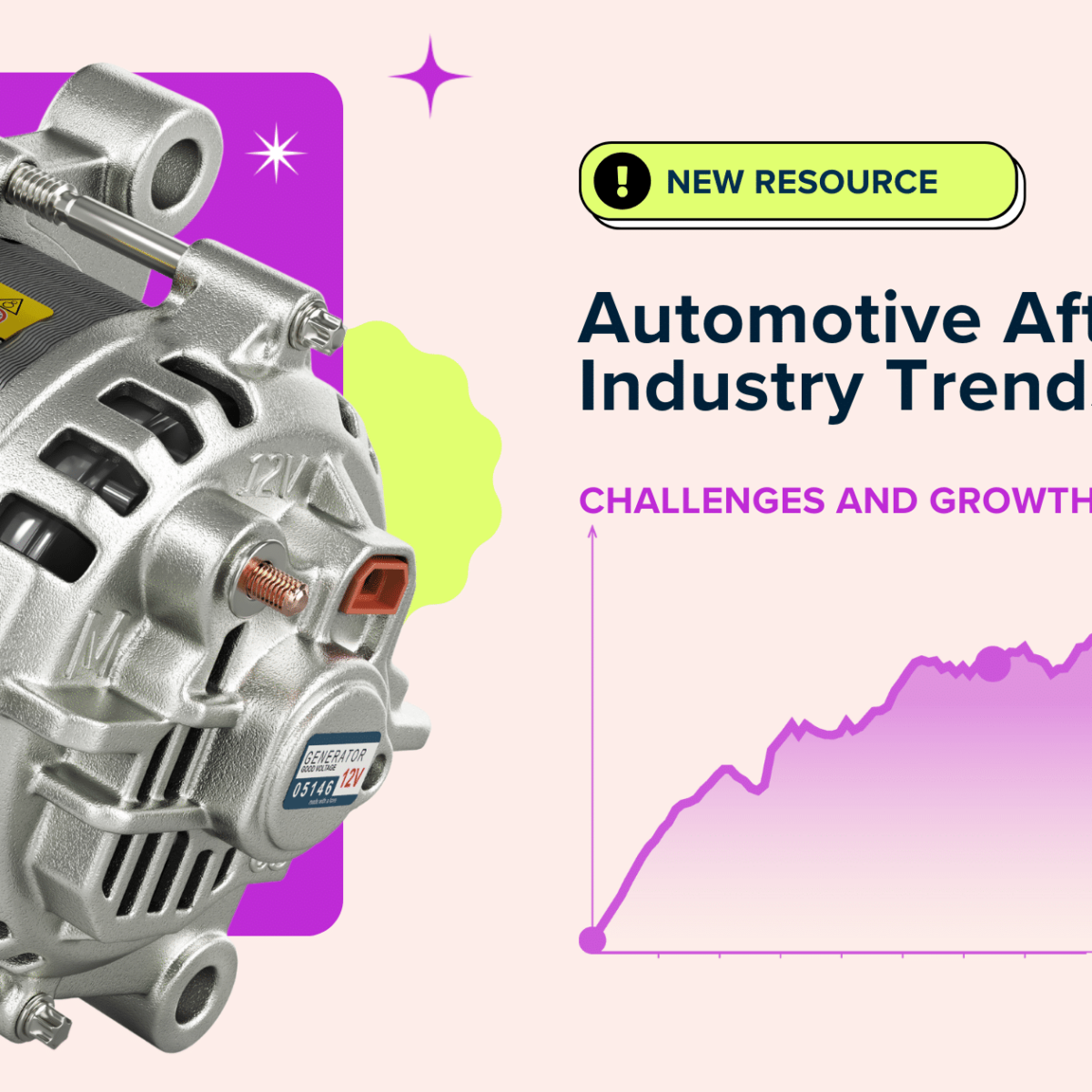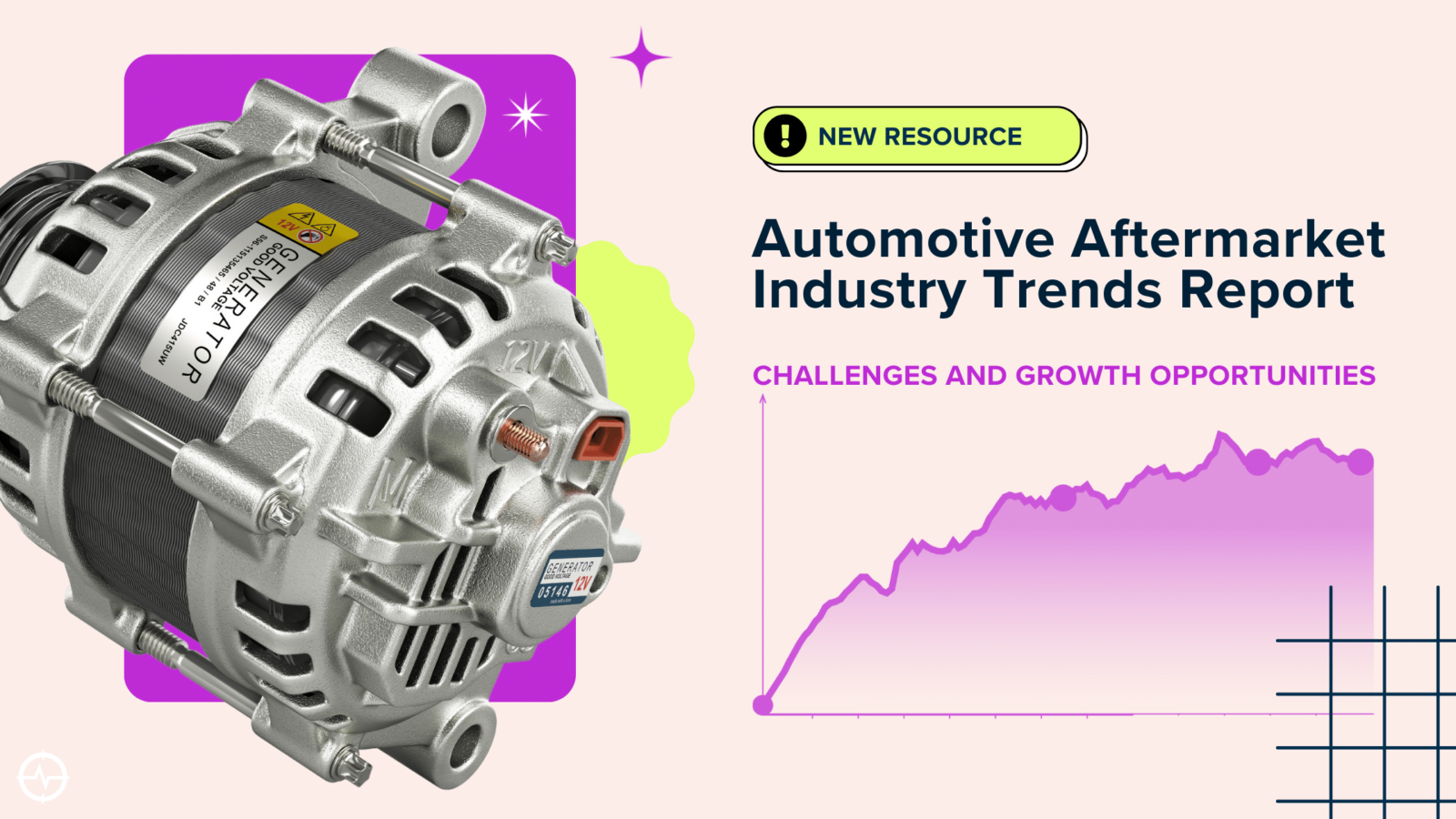The team at Content Status has gathered data from across eight categories, seven retailers, and nearly eleven thousand product pages to compile our 2023 Automotive Aftermarket Perfect SKU® Report. This report explores health scores across the automotive aftermarket to understand how companies fare against basic content requirements and critical elements of the product page.
Read on to uncover valuable content insights and explore how you can optimize your product pages to gain footing and earn a winning position in this competitive market.
Understanding the Automotive Aftermarket
The global e-commerce automotive aftermarket is expected to grow at a compound annual growth rate of 17.5%, reaching $164.7 billion by 2030. Rising digital initiatives, customer DIY preferences, and the increased production of automobiles contribute to substantial market growth.
The automotive aftermarket is ideally positioned for this growth. But to capitalize on an eager consumer base, companies must understand the nuances of e-commerce marketing for their audiences.
The epicenter of e-commerce transaction success is the product page. The quality of content buyers see online immediately influences their purchase decisions, making it critical for distributors, retailers, and manufacturers to get it right.
Before diving into our report’s findings and key insights, let’s explore the challenges facing the automotive aftermarket industry. By understanding the market and the present challenges within it, retailers can better know how to respond with data-driven, high-converting product content.
Challenges Within the Automotive Aftermarket E-Commerce Space
Though the automotive aftermarket industry is primed for growth, key challenges exist. Understanding how to navigate these obstacles will allow businesses to gain a competitive advantage and claim market share today and into the future.
The following challenges affect traffic and revenue among businesses vying for sales and customer loyalty.
An Oversaturated Market
The expansion of the digital shelf has increased the automotive aftermarket competition more rapidly than ever. Businesses must establish themselves in an oversaturated market and differentiate themselves from brands competing for the same customer base.
Optimizing product detail pages is crucial in standing out in a sea of content. When brands and sellers understand how to effectively structure PDPs and the type of content to include, they increase visibility, traffic, and sales to an audience ready to purchase.
Managing a Complex Catalog
The automotive aftermarket includes many products, a few of which we’ll cover below. From engine components to accessories and everything in between: there’s a buyer for these products within the industry.
Aftermarket retailers compile massive catalogs of their inventories. And because auto parts require structured information across multiple attributes, getting catalog content right is essential. For example, shoppers aren’t simply looking for an oil filter. They’re looking for a filter that matches a vehicle’s specific make, model, and year. This information must be accurate for consumers to find the parts they need the first time around.
Managing massive catalogs poses significant challenges for players in the automotive aftermarket space. If product data isn’t accurate or consistent, retailers lose traffic and trust, which means they also lose sales.
Inventory Management
Along with managing a comprehensive catalog, retailers must stay on top of inventory management. When shoppers click “purchase” on a product, they rightly assume the item is available and will be shipped to their door. When inventory isn’t properly managed and accounted for, retailers don’t know what they do or don’t have. This leads to over-ordering and under-ordering, wasting time, warehouse space, and money. If a seller has run out of a product but doesn’t note that information on the product page, the customer has a negative experience, likely leading them to shop elsewhere.
Proper inventory management ensures calculated and intentional resource spending and appropriate stock to meet the consumer’s needs. Retailers lose money, time, and reputation without an inventory management strategy.
Product Discovery and Search
An expansive product catalog, incorrect inventory information, and unstructured product data are common challenges facing automotive aftermarket retailers, contributing to the more significant obstacle of cumbersome product discovery and search.
Implementing a robust Product Information Management (PIM) system addresses discoverability by integrating product information on all platforms and channels where a retailer sells.
Empowering consumers to find the right SKU for a particular vehicle is crucial to this market, but it’s often difficult for retailers competing in the industry. Streamlining product search and discovery simplifies the shopping experience and helps users arrive at checkout faster –– and happier.
Shipping and Tracking
Amazon Prime’s two-day shipping has drastically shaped consumer expectations for shipping. The automotive aftermarket industry now competes against these standards with products that are difficult or impossible to ship in just two days and often require specialized logistics.
Today’s consumer demands transparency, including in shipping and delivery. Shipping dates, expected delivery dates and times, and tracking information must be available to shoppers. Retailers should track this data in real-time and provide it to the end customer. When this doesn’t happen, customer confidence and satisfaction take a hit.
Poor Product Page Content
A retailer’s product content strategy determines visibility, engagement, traffic, and sales. Product detail pages provide consumers –– both retail and wholesale –– with the information they need to find the product and determine if it’s the item they’re looking for to provide a specific solution.
Unfortunately, many retailers don’t understand the how or why of product page content. Competing in this market requires retailers to deliver quality, accurate, consistent, and relevant content on their product pages.
Without optimized PDPs, retailers miss the algorithmic mark and surrender sales to the competition who have invested more resources into this arm of their marketing strategy.
Automotive Aftermarket Report Overview
The above challenges are just a few stalling growth and revenue streams for automotive aftermarket retailers. Our research provides helpful insights for these companies, identifying actionable steps that help retailers compete wherever they sell.
Based on the results of our 2023 audit, companies have tremendous opportunities to gain market share by providing shoppers and customers with a product page experience that goes beyond ACES, PIES, and fitment. In our second annual Automotive Aftermarket Industry Report, Content Status analyzed 10,831 products in 8 categories on seven retail sites to understand content health scores for sellers, categories, and brands.
While this report covers many insights, content scoring is critical to any auditing strategy. Calculating the health score of marketing content and copy provides valuable insights into the marketing efforts of brands competing in this space.
Below are the key understandings for our grading methodology used in collecting this data:
- Our teams used a consistent scoring methodology across all sites, ensuring consistency for the data collected
- The health score of the content is calculated using all the basic requirements that a supplier has control of, including the title, description, bullets (your marketing copy), and images (your image assets)
- Enhanced content, Video, PDFs, and 360 usage were not included in the grades
Download the report to access all data collected in this research and examine the in-depth insights described above.
Key Insights and Stats
Content Status uses proprietary data and unique grading methodology to understand how companies are faring against basic content requirements and critical elements of the product page. Here are the key insights from this year:
- For content health, Amazon.com scored the highest, but at only 3.23 out of 5
- 65% of product pages failed basic content requirements
- 65% of products had four or fewer image assets
- 81% of product pages did not include 360° spin assets
- The average number of characters used in title lengths on all five automotive sites was 43, which is well below the average recommended character count
Audit Rankings by Segment
- Retailers
Amazon and Walmart are the overall winners due to suppliers providing them with more content than they provide to other retailers – most likely due to minimum setup requirements.
- Category
Across all categories, there is a massive opportunity to gain market share via better quality, more complete product content. Car Batteries is the standout leader in overall content, with a health score of 3.0. It’s no coincidence that the same category also leads in title and description scores.
- Brands
Of the 572 brands tested, only 7 have an average health score of 4.0+, with a minimum of 10 items tested. From a volume perspective, Michelin and Wagner consistently provide excellent content.
Results by Retailer: All Products
From a shopping experience perspective, Amazon continues to dominate with its broad use of rich content, which is proven to increase conversions versus pages without it. From a grading standpoint, Amazon’s emphasis on longer titles that include brand, type, key features, model number, etc., drives higher overall health scores and SEO performance.
The key takeaway: automotive retailers should follow suit in their product title requirements.
Content Status’s Automotive Aftermarket Industry report includes vast data and insights from our research that we can’t fit into this post. To see what’s happening in this industry in greater detail, including results by retailers for some of the most popular parts and items in this market, download the report.
The Greatest Opportunity for Improvement: Optimizing Product Titles
Creating product content optimized for a competitive digital shelf is the key to succeeding in the automotive aftermarket space. We found that product titles were, across the board, the weakest component of product content among the retailers and products we evaluated.
The optimal title varies according to retailer and category, but the ideal product title includes specific data points, following guidelines that maximize visibility and information presented to the reader. Our research found that Advance Auto Parts does the best job maximizing its SEO opportunity by creating properly structured titles.
We must acknowledge that retailers and distributors are typically limited by information provided by the suppliers. Therefore, it’s the supplier’s responsibility to deliver quality, accurate product content.
An SEO-optimized product title includes the following components:
- The brand
- Product type and defining qualities
- Item name and model number
- Pack count, quantity, color, size, etc., if applicable
An optimized title consists of 50 to 80 total characters. This ensures it’s long enough for Google and other engines can crawl the title, but it’s short enough to be readable. The product title will spur shoppers to learn more or send them toward competitors. Getting the title right is essential. And because the quality bar is low, sellers that address product content optimization – especially in product titles – will gain a competitive advantage that allows for significant advances in this market.
Publish Revenue-Driving E-Commerce Content with Content Status
Your product pages are full of untapped opportunities to drive impactful growth. Optimizing your product content allows you to:
- Boost findability
- Improve brand consistency
- Reduce returns
- Increase sales
Product pages are central to revenue growth. Content Status has the tools you need to build product pages that convert.
Our auditing, monitoring, and scoring tools give you insights into the health of your content and how you can improve performance even before you click publish. Don’t waste time on content that doesn’t measure up. Connect with Content Status today or start your free trial to discover how content optimization will transform your position in this market.
Love reading, keep reading
Get the latest articles delivered directly to your inbox!


